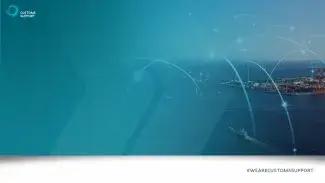In 2021, the European Union began to replace ICS with ICS2. Instead of upgrading the existing platform, ICS2 has been purpose-built and will be introduced in stages so that it can be tested and improved in real application. But what is the purpose of ICS2, and how will it affect you?
What does ICS2 do?
Import Control System 2 requires pre-notification of shipments that are due to arrive at the European Union. The aim of this pre-notification is to identify risky shipments ahead of time, whilst allowing shipments of lower risk to move through the border with less hinderance.
How this works is that you (the importer), your seller, the commodity, the transport mode, and the route are all scored for risk using a safety and security declaration. Your shipment is then allocated a risk score based on the information that has been submitted.
By requiring traders to submit safety and security declarations ahead of arrival, ICS2 is designed to:
- Increase protection of EU citizens and markets.
- Allow customs to focus resources on higher-risk shipments.
- Support customs responses in a crisis.
- Reward legitimate traders for their compliance.
- Simplify the exchange of information between Economic Operators (EOs) and customs.
When can we expect ICS2 to affect us?
ICS2 is being rolled out in three phases, which started in March 2021:
Phase 1 – 15th March 2021
Phase one applied to express carriers and postal operators, requiring them to submit pre-notification data using the minimum Entry Summary Declaration (ENS) dataset.
Phase 2 – 1st March 2023
Phase two will roll out to include air carriers, as well as EOs and freight forwarders who are moving goods by air. The complete ENS dataset is also required for all movements from 1st Mach 2022, including postal operators and express carriers.
Phase 3 – 3rd June 2024
Phase three will complete the rollout of ICS2, with carriers, traders, and operators across all other modes (maritime, inland waterway, road, and rail) required to complete the full ENS dataset.
What can you do to prepare for ICS2?
Risk scores are becoming more important as customs strive to focus their resources amongst growing volumes.
Here are some of the things that you can do to reduce your risk and keep your processes streamlined:
Have a customs consultant give your supply chain a quick scan
Risk scores can be affected by both non-compliance and a lack of core processes.
Getting a customs consultant to give your operation a quick scan can highlight key gaps and help you to improve your efficiency.
Get AEO accreditation
All Economic Operators (EOs) are assessed for risk by ICS2. However, Authorised Economic Operators (AEO) have already proven to customs that their processes are of a certain standard. Although this is not a guarantee that your shipment will not be selected for inspection, it does automatically lower your risk.
It‘s not only your AEO that benefits you: AEO-accredited partners will also lower your risk.
Use a digital, end-to-end customs agent
Digital clearance agents have lower risk of error, compared to those who are manually inputting data on each declaration. By using an end-to-end digital provider, you are assured that the same information will be entered on the export, safety, and import declarations, so customs won’t flag data discrepancies as a reason to inspect your shipment.
Customs Support is here to help you prepare for ICS2
As AEO-accredited providers of end-to-end customs clearances, with over 100 offices and 13 countries, we are here for you. Contact us for more information on our customs consultancy and clearance services today.















